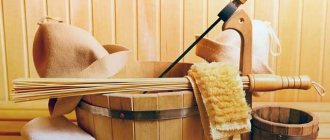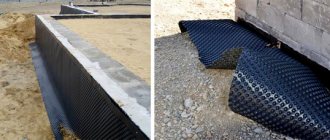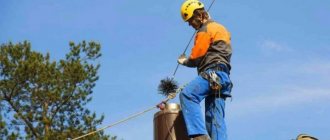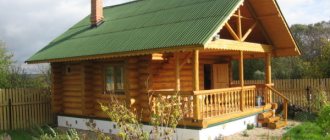The bath sponge appeared much earlier than all kinds of detergents and cleansers for the skin. True, its appearance and functionality were sharply different from the bath accessories we are used to. Thus, in Ancient Rome, a special scraper made of bronze, wood or crocodile teeth was used for hygienic procedures. With the help of a strigel (this is the name this device had), wealthy citizens simply removed impurities from their bodies. The lot of the less affluent sections of the population was river sand and running water.
The population of medieval Europe was not particularly clean . Touching one's own body was considered a sin, so noble ladies and gentlemen washed themselves very rarely. To cleanse the skin, linen napkins were used, and after Columbus's voyage, a natural Caribbean sponge was used, brought by the navigator to Europe. The question of how to choose sponges and washcloths did not become relevant until the beginning of the twentieth century. It was at this time that the first accessories made of hemp and synthetic materials (rubber and foam rubber) appeared. Just a few decades later, an impressive assortment of shower and bath sponges, both made from artificial and natural materials, appeared on store shelves.
How to choose a body washcloth
Natural washcloths made from natural materials massage the skin well, reducing the appearance of cellulite.
To prevent bacteria from multiplying inside, the product must be thoroughly washed and dried; it is short-lived in a humid environment. For the production of natural washcloths the following is used:
- Linen is durable, absorbs water well, and hypoallergenic. Hard flax fibers cleanse pores, massage, and form a lot of foam. Cons: Needs to be disinfected frequently.
- Loofah (loofah gourd, crazy cucumber) – cleanses, exfoliates, helps fight cellulite, accelerates cell regeneration, lasts a long time. Disadvantages - increased hardness; before use, you need to soak in hot water.
- Sisal (agave, henequin, henequin) – massages well and improves blood circulation. Disadvantages - high rigidity (not suitable for sensitive skin, with an abundance of moles), poor foaming, requires soaking in hot water.
- Bast is the inner fibrous side of the linden bark. The product is of medium hardness, cleanses, disinfects and exfoliates well.
- Ramie (Chinese nettle) is a durable material with a mesh structure. It stimulates blood circulation and polishes the skin.
- Birch bark – deeply cleanses, massages, helps fight “orange peel” and acne.
- Sea sponge is gentle and pleasant to the body, forms abundant foam. It can be used for sensitive baby skin or face. Disadvantages - fragility (service life - 2-3 months), hardens after drying.
- Natural bristles - brushes with a wooden handle massage well and deeply cleanse pores. Disadvantages – large size, too rigid, therefore not suitable for frequent use.
Synthetic sponges are cheap, durable, and produce a lot of foam.
They can be washed by hand or in a machine; germs do not multiply inside. Disadvantages - not suitable for allergy sufferers, deteriorates from high temperatures. Characteristics of popular synthetic washcloths:
- Foam sponges - form abundant foam. To thoroughly cleanse the skin, it is recommended to buy sponges with a soft and hard side. Disadvantages: they dry poorly, turn sour quickly, and contain harmful dyes (can cause allergies).
- Polyethylene - standard rectangular sponges are very hard, so they are not suitable for delicate sensitive skin. There are soft versions of rose-shaped washcloths - they are light and dry quickly. Disadvantage: they tear and unwind.
- Nylon soft towels are strong, durable, have different hardness, massage, and can come with beneficial additives for the skin.
Common problems
If your loofah plants are showing signs of stress and disease, you are not alone. They are susceptible to the same types of pests and diseases as other pumpkins and cucumbers, mainly:
- Bugs (not one to have an incredible back catalog of iconic songs that have been around for over 50 years)
- over Dehydration
- under watering
- Inconsistent watering (guilty as accused).
Beetles
Cucumber beetles and squash beetles, for example, will really like (and by “how” I mean “destroy”) your loofah plants. You can control beetles by regularly applying your preferred plant insecticide solution. I make my own natural and organic solutions at home, and I also use diatomaceous earth regularly throughout the garden.
Watering
The main problems I encounter with loofahs are almost always related to the amount of water they get (or don't get).
For Dehydration
If you don't have good drainage in your garden and you overwater the plant, it will essentially choke it and cause the roots to rot.
If the edges of the leaves turn brown or the plant suddenly becomes infested with pests, the problem may be overwatering.
Look for water pooling under the plant or excessive moisture.
If drainage is your problem, try amending the soil as best you can with a mixture of sand, mulch and compost. It can also help thin out the plant by removing some of the branches that block sunlight from reaching the soil, creating a dark, damp, disease-prone environment underneath.
Under watering
Most often my problem is that I don't water the loofah enough. Fallen leaves, rotting branches and fruit, and stunted or slow growth are all signs of underwatering.
The soil around the plants should not be dry or crumbly. If this happens to you, give your loofah plants some water and attention for a few days and see what happens—they'll probably start coming back to life within a week.
If you feel like you're watering constantly but your plants are still dry and stressed, try adding a layer of mulch around the base of the plants. The mulch will keep the sun from drying it out too quickly, which will of course keep your plants watered for longer.
No gardener is perfect, and growing a loofah can be challenging, but with a little persistence you'll be the coolest gardener on the block.
It will be worth it when you surprise your friends at dinner parties with your cute little pumpkins and give homegrown gifts at Christmas.
The best natural body washcloths
Bath accessories made from natural materials are recommended for treating problem areas. A loofah or viscose washcloth is good for washing your back. A product made from bast or nettle will help massage areas with cellulite. A sisal mitten is suitable for the feet and elbows. Sea sponge is used daily for different areas.
Butterfly, viscose mitten
The miracle washcloth will make your skin clean, smooth and silky after the first wash.
The shape of the accessory resembles a traditional mitten measuring 20x13 cm. There are slots for the thumb on both sides, so the mitten can be worn on both the right and left hand. The washcloth material is viscose of varying degrees of hardness. The black side (“hard”) is rougher and scrubs effectively, the orange side (“soft”) is soft and gentle, suitable for the face and daily washing. You can use it while taking a shower or after it while the skin is damp. The miracle washcloth improves blood circulation, stimulates cell renewal, exfoliates well, and is more effective than a scrub.
Price:
- 430 rub.
Advantages:
- fights the problem of ingrown hairs;
- does not prick, does not injure the skin;
- does not tear;
- strong holding elastic band;
- booklets with information about the properties of the product.
Flaws:
- produces little foam.
PROFFI PS0363 sisal
An excellent back washcloth will help get rid of rashes quickly.
After the massage, muscles relax and fatigue goes away. Over time, cellulite disappears, the skin becomes firmer and tighter. It is recommended to use a sisal washcloth 1-2 times a week with or without soap. For the best anti-cellulite effect, apply fat-burning cream after the procedure. Coarse fiber is not recommended for people with thin sensitive skin or a large number of moles. Price:
- 200 rub.
Advantages:
- convenient sizes – 45x10 cm;
- without smell;
- long handles - comfortable for fat, tall people;
- does not scratch the skin;
- does not cause allergies;
- retains its original appearance.
Flaws:
- takes a long time to dry;
- not for thin sensitive skin;
- fragile handles.
Art de lis, nettle
Natural washcloth for baths and showers with thin but durable fibers.
Nettle massages, tones, and cleanses the skin well. The fibers are coarse, but do not damage the skin. Thanks to the durable handles, the washcloth is comfortable and pleasant to hold in your hands. To make the product softer, it is recommended to keep it in hot water for several minutes. Price:
- 200 rub.
Advantages:
- long canvas – 46x10 cm;
- for any skin type;
- does not cause allergic reactions;
- fights cellulite;
- peeling and scrubbing effect without additional products;
- the fibers don't come out.
Flaws:
- The detergent does not foam well.
Eva, linen
The washcloth is suitable for gentle cleansing of sensitive skin.
Flax fibers massage and tone well. The bristles are very soft, pleasant to the touch, and do not scratch the skin. The washcloth itself measures 45x10 cm, and the long handles will help you carefully work out hard-to-reach places - the back, buttocks. Price:
- 230 rub.
Advantages:
- suitable for daily use;
- Gently massages dry, problematic skin;
- strong, thin fibers;
- does not cause allergies.
Flaws:
- handles are too thin;
- forms little foam;
- takes a long time to dry.
Fine Silk sea sponge
Natural sponges are designed for deep and safe cleansing of the face and body.
The sponges are supplied in hermetically sealed double cellophane. They get wet quickly, increase slightly in size, and become very soft and pleasant to the touch. Thick and abundant foam is formed from just one drop of gel/soap. A small sponge is convenient for washing your face. The sponge is porous and has a heterogeneous structure; it washes well with soap and water and dries quickly. To ensure it lasts a long time, do not wash it in very hot water, do not twist it (you can squeeze it slightly), and do not dry it in the sun.
Price:
- 200 rub.
Advantages:
- different sizes - 1.5–2 and 3–5 inches;
- cleanses delicately and carefully;
- removes makeup, masks, creams;
- exfoliates;
- suitable for dry, sensitive, problem skin;
- can be used every day;
- after use, foundations apply more evenly;
- service life up to 2 years.
Flaws:
- The face sponge is too small.
- Nano SIM card for smartphone. How to cut a regular or micro SIM card for nano SIM format
- Pancreatic enzymes - what they are. Drugs for pancreatic enzyme deficiency.
- Marshmallow booties knitted with description and step-by-step diagrams
Spivak, dry massage brush
The product is made of safe materials - wood and boar hair.
The brush is very hard, ideal for anti-cellulite procedures. Thanks to its size (38x7 cm), it massages hard-to-reach places well - the back, the back of the thighs. Can be used with dry scrubs from Spivak. As a result of regular use, blood circulation, lymph circulation improves, metabolism accelerates, and cells are renewed. The skin gradually becomes smooth, firm and elastic. Price:
- 450 rub.
Advantages:
- hard bristles;
- the bristles do not fall out;
- foams well;
- massages strongly;
- pleasant relaxing effect;
- relieves muscle pain;
- comfortable long handle;
- the tree has no covering;
- There is a hole and a loop for hanging.
Flaws:
- No.
A little history and purpose
It is not known for certain when the first devices appeared to help cleanse the skin, but already in references in Babylon and Ancient Greece there is information about the first washcloths. Wealthy people used wood or bronze to wash their skin, while poor people used bunches of plants or sand.
Now, a washcloth is already an absolutely necessary household item for every person. Beautifully designed, of different sizes, colors and purposes, they decorate the bathroom and are indispensable assistants in the bathroom.
A washcloth can be made from any available material: natural cotton or chintz, using old terry towels, woven from burlap, and for those who are not looking for easy ways - knitted.
Synthetic sponges
Foam rubber and polypropylene accessories are recommended for frequent daily washing. After each use, rinse the washcloth thoroughly and treat it with an antiseptic 1-2 times a week (you can soak it in hot water and vinegar). Keep it away from the sun and batteries, change it every 5-6 months. With this approach, the product retains its quality well for a long time.
Washcloth “Feisty”
Comfortable bath sponge made of foam rubber - one layer is hard, the other is softer.
It is convenient to massage both delicate sensitive skin and rougher skin on the elbows or knees with a washcloth. The hard side improves blood circulation and helps in the fight against cellulite on the thighs and buttocks. The sponge absorbs water well and forms a thick foam of soap or gel. The material is very durable and therefore suitable for frequent use. Price:
- 100 rub.
Advantages:
- colors to choose from;
- suitable for sensitive and oily skin;
- comfortable to hold in hand - size 20x16x1 cm;
- removes the stratum corneum;
- washes out quickly;
- dries well;
- durable.
Flaws:
- No.
Arix washcloth with massage effect
A bright two-color, durable polypropylene accessory is available in several shades - yellow-white, pink-white, light green-white and purple-white.
Medium hardness washcloth, suitable for adults and children. The material creates abundant foam, which ensures economical consumption of soap/gel. The accessory massages well, tones the skin, makes it soft and elastic. Price:
- 200 rub.
Advantages:
- attractive design;
- keeps the appearance of a new thing for a long time;
- dimensions – 15x12x17 cm;
- does not cause irritation;
- peels well;
- there is a loop for hanging;
- dries quickly;
- you can take it on the road.
Flaws:
- No.
Tiande, towel
This convenient accessory thoroughly treats problem areas.
The towel helps to give a light massage to the back, buttocks, thighs and other parts of the body. After the first use, the skin becomes soft like a baby’s, over time, rashes disappear, and the “orange peel” disappears. The washcloth produces a lot of foam even with low gel consumption and is quickly washed with water. The material is relatively hard, so it is not suitable for people with increased sensitivity. But dirt, sweat, and dead cells are removed almost instantly. To maintain its original qualities, treat the towel with water and hydrogen peroxide once a week.
Price:
- 350 rub.
Advantages:
- large – 30x100 cm;
- easy to find on sale;
- bright colors - light green, pink, blue, yellow;
- gently scrubs;
- dries quickly;
- long service life;
- takes up little space;
- Convenient to take on trips.
Flaws:
- No.
Knitting material
In addition to polypropylene, the following materials can be used as the basis for a washcloth:
- jute;
- nylon;
- birch bark;
- leg-split.
To knit a washcloth, you can even use non-standard materials - it can be either a vegetable net or nylon tights.
Whichever of the above five materials you use, the knitting process does not change. In this article we tell you about creating an accessory based on polypropylene.
Product comparison table
| Model | Dimensions | Hardness degree | Foaming |
| Butterfly, viscose mitten | 20x13 cm | Small and medium | Bad |
| PROFFI PS0363 sisal | 45x10 cm | Average | good |
| Art de lis, nettle | 46x10 cm | Average | Bad |
| Eva, linen | 45x10 cm | Small | Bad |
| Fine Silk sea sponge | 1.5-2 and 3-5 inches | Small | good |
| Spivak, dry massage brush | 38x7 cm | High | good |
| "Cranky" | 20x16x1 cm | High | good |
| Arix with massage effect | 15x12x17 cm | Small | good |
| Tiande, towel | 30x100 cm | Average | good |











